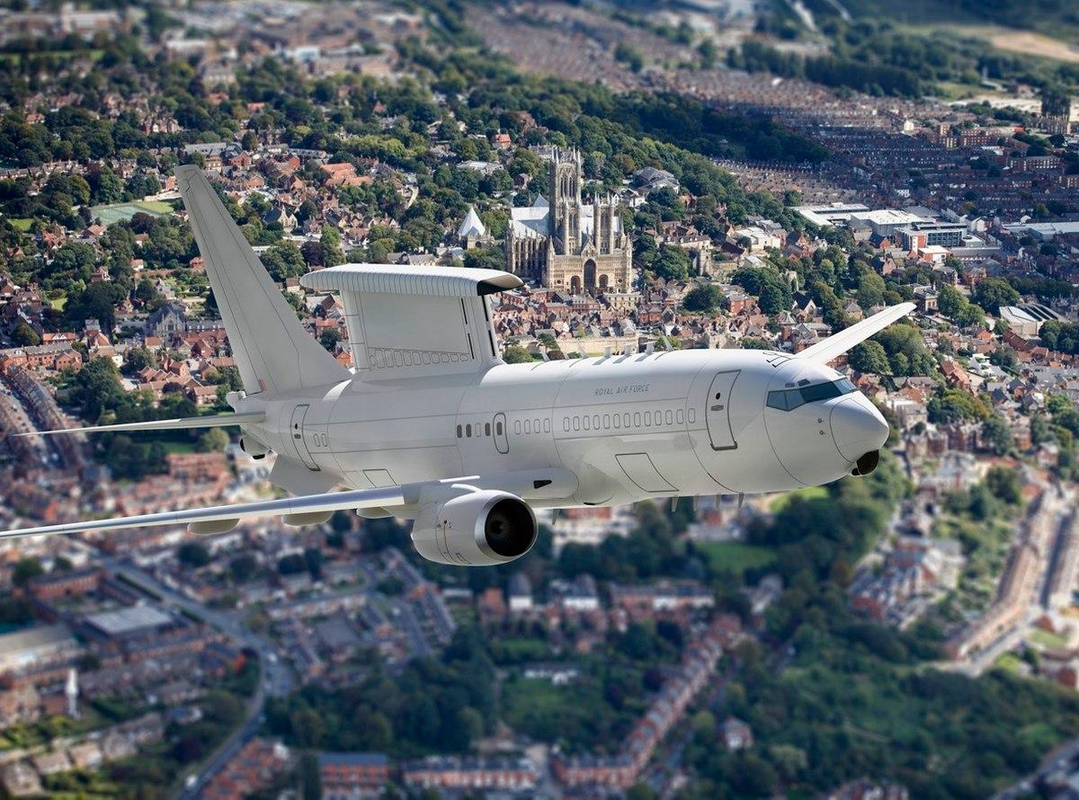|
By: Andrew Chuter Defense News March 22, 2019 LONDON — Britain’s Royal Air Force will operate a fleet of five Wedgetail early warning and control aircraft in an almost $2 billion deal with Boeing.
The British Ministry of Defence said in an announcement Mar 22 that Defence Secretary Gavin Williamson had inked the deal with Boeing to provide a replacement for the current fleet of Sentry aircraft. All five aircraft, based on the Boeing 737 NG airliner, will be modified to the E-7 AEW standard by local British company Marshall Aerospace and Defence Group based in Cambridge, eastern England. The company is best known for modifying and supporting Lockheed Martin C-130 customers in Britain and else where but has also undertaken work recently on special role modifications on other platforms. The deal is expected to sustain about 200 jobs at Marshall’s as well as potentially open the door to future support work. The announcement made no reference to program timelines, but MoD sources said work is beginning immediately with the first aircraft slated for delivery in 2023, slightly later than originally hoped. The aircraft are needed urgently to replace the decaying capability provided by aging RAF Sentry E-3D platforms, which have suffered groundings and high unavailability rates in recent years. Doug Barrie, the senior air analyst at the International Institute for Strategic Studies think tank in London, said that upgrading the RAF’s capabilities in airborne warning control was a top priority. “Given the comparative lack of investment in the RAF E-3 fleet, combined with a worsening security environment, identifying and procuring a successor has become increasingly important, particularly for any kind of peer-on-peer conflict where situational awareness and command and control are key to operations,” he said. It’s the fourth export success for Wedgetail following its purchase by Australia, South Korea, and Turkey. The aircraft is not operated by the U.S. military. The British buy will be based on the Australian version of the aircraft. The purchase will open up significant export opportunities for Australian suppliers who already have the technology installed on Wedgetail aircraft. The deal is a further sign of Britain’s strengthening industrial and military cooperation. Last year Australia agreed to buy a fleet of BAE Systems Type 26 frigates similar to the anti-submarine warships already ordered by the Royal Navy. The closer ties with Australia was a point picked up by Williamson in a statement released by the MoD. “This deal strengthens our vital military partnership with Australia. We will operate the same state-of-the-art F-35 jets and world-class Type-26 warships, and this announcement will help us work even more closely together,” he said. British aircrews have been training on the Wedgetail in Australia since last year. Williamson announced last year that the MoD had opened a discussion with Boeing and the Royal Australian Air Force over a possible purchase. The British opted for a single source purchase without opening up the requirement to the competition – a decision that angered the Parliamentary Defence Committee and rival industry suppliers, particularly Airbus and Saab, which partnered to offer Saab’s Erieye radar matched with the Airbus A330 airframe. The firming up of the deal to buy the Wedgetail comes ahead of the expected first delivery of another Boeing 737-based platform – the P-8 maritime patrol aircraft. The first of nine P-8s are scheduled for delivery to the RAF Lossiemouth, Scotland, in the Spring of 2020. That deal was also a single source procurement. Marshall is already a supplier on the P-8 program.
0 Comments
Leave a Reply. |
BlogCategories |
VAWVRC Foundation is a registered 501(c)3 non-profit organization.

